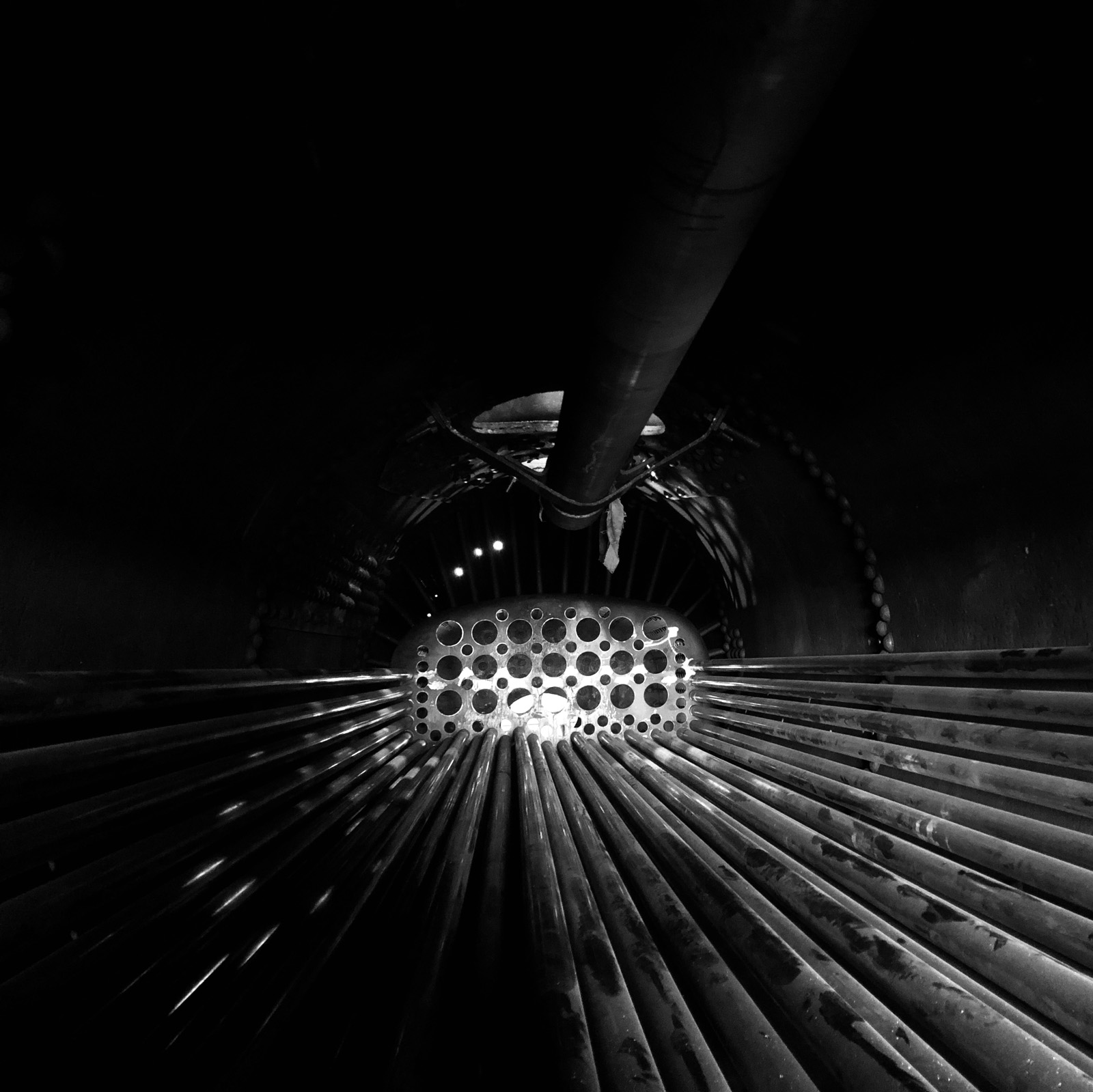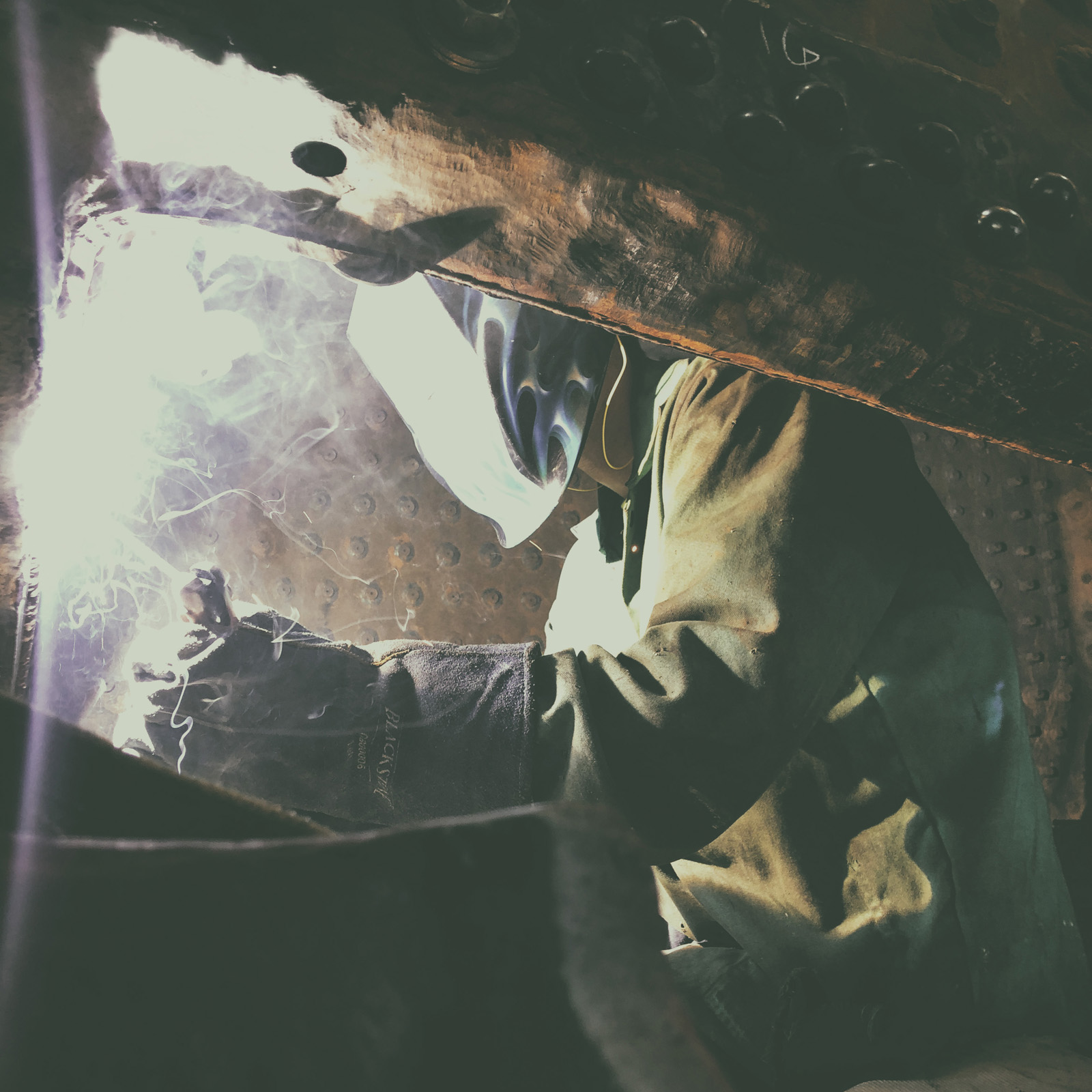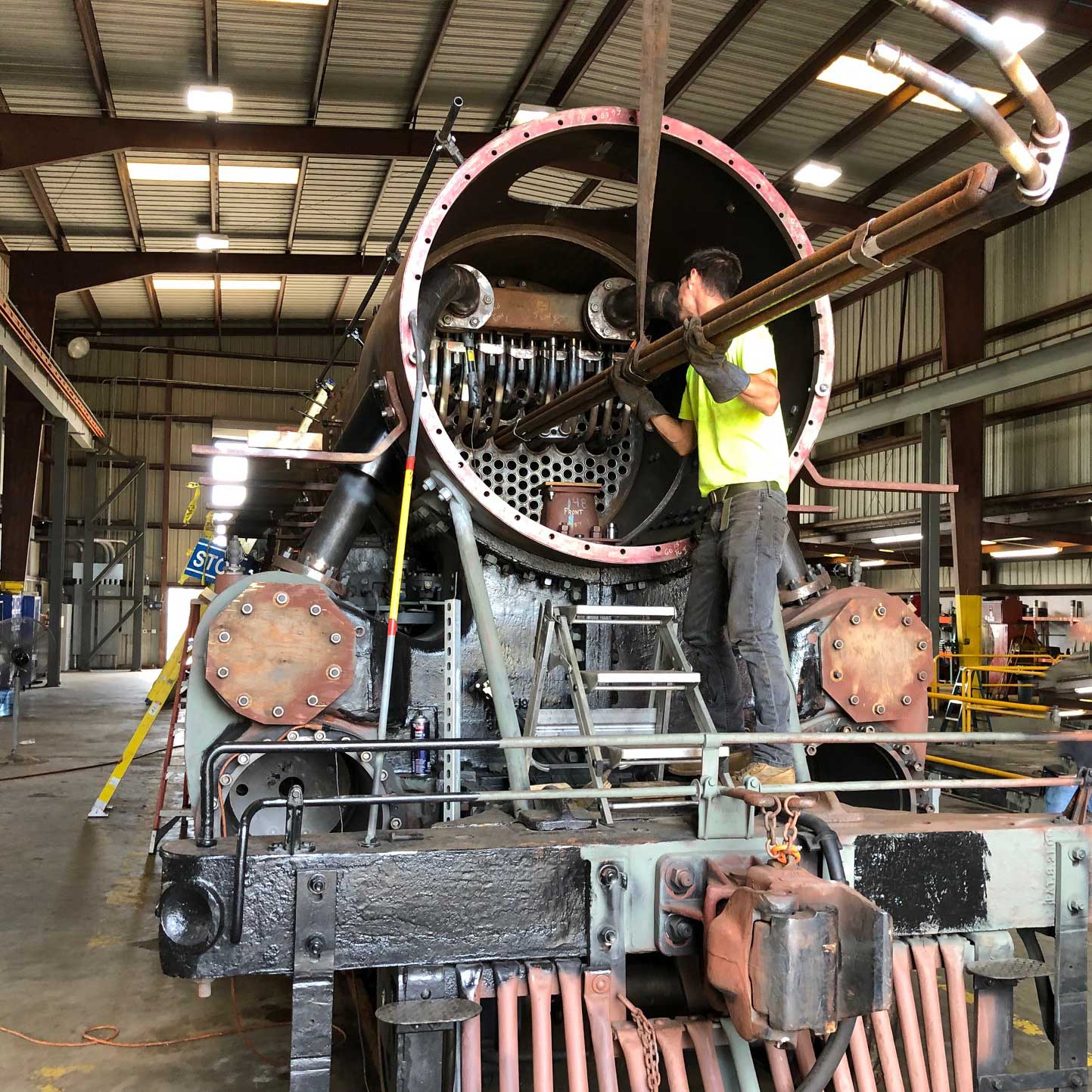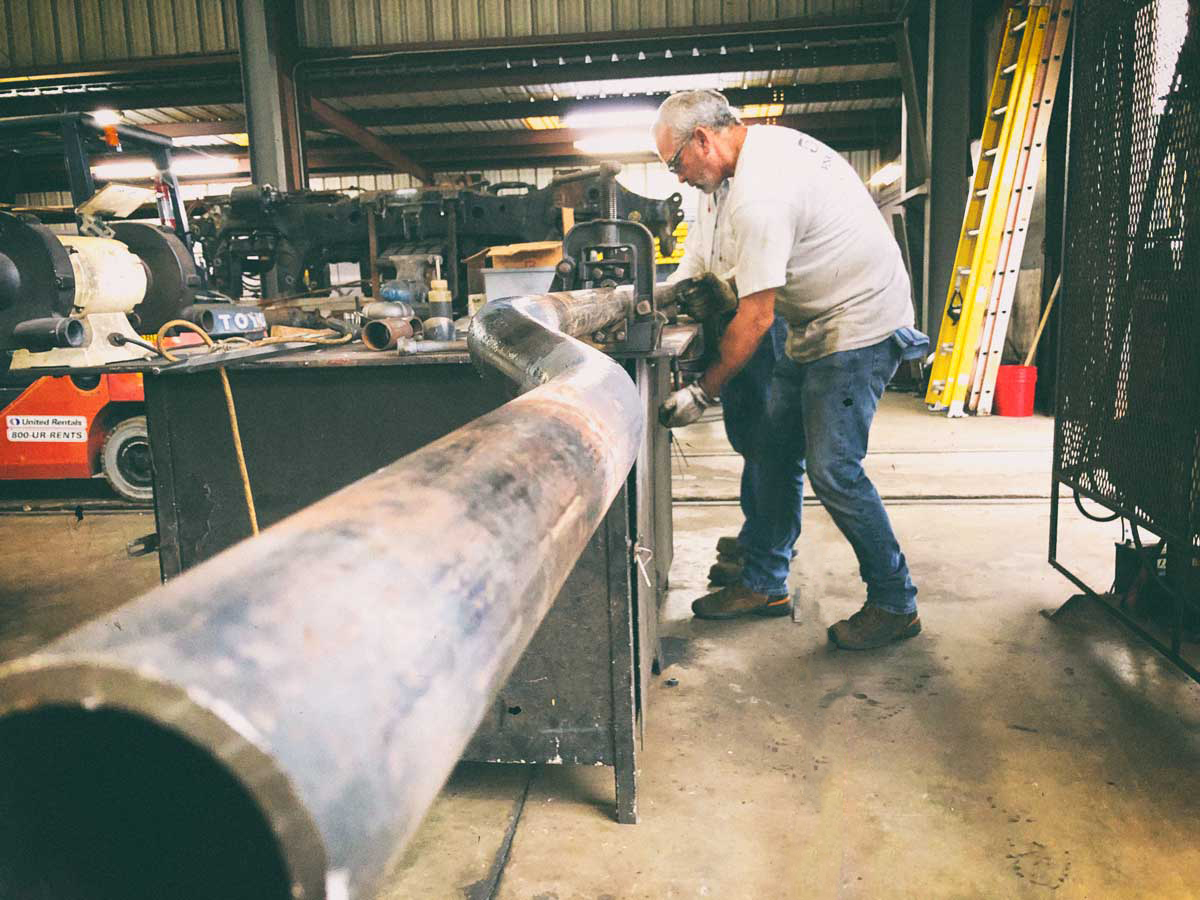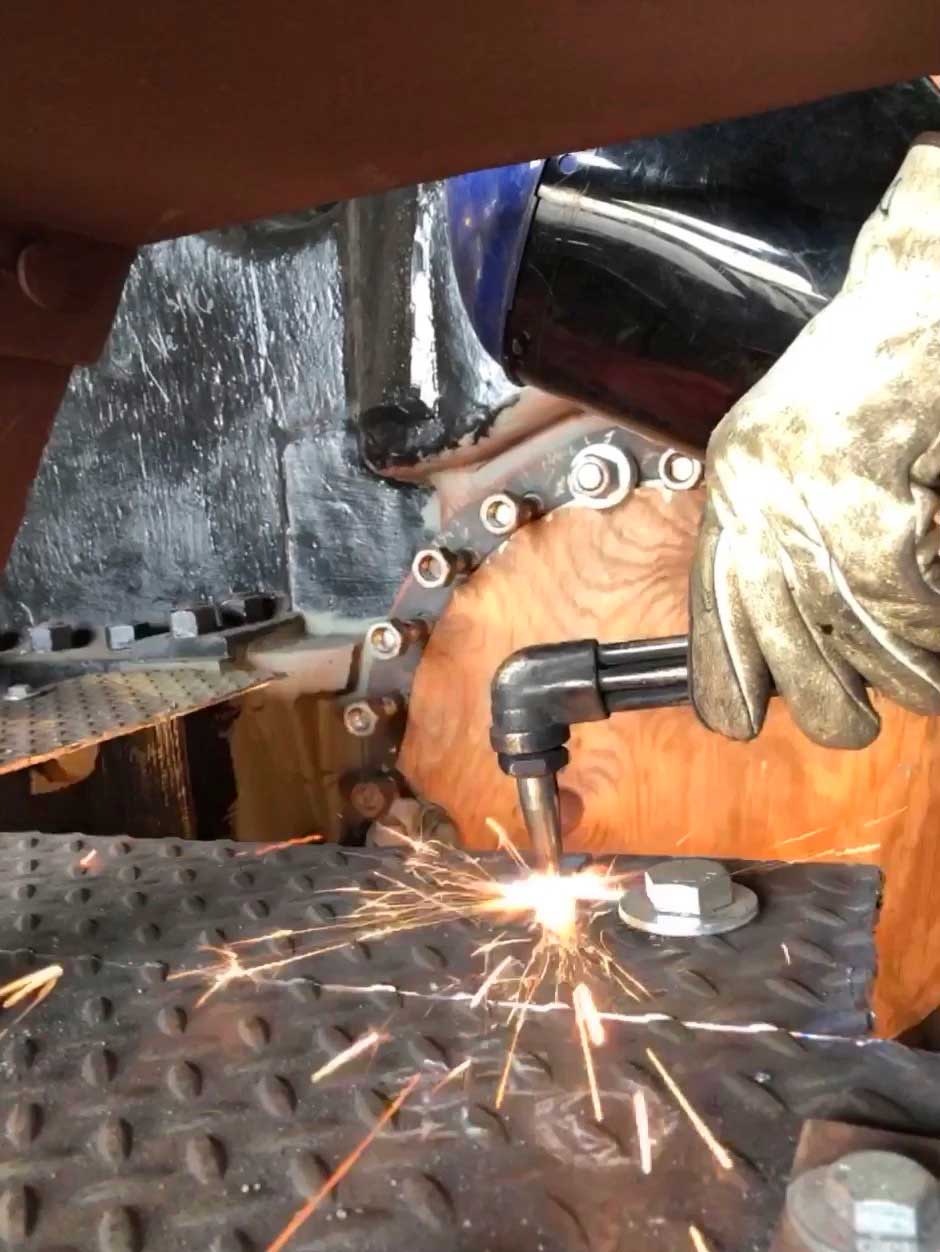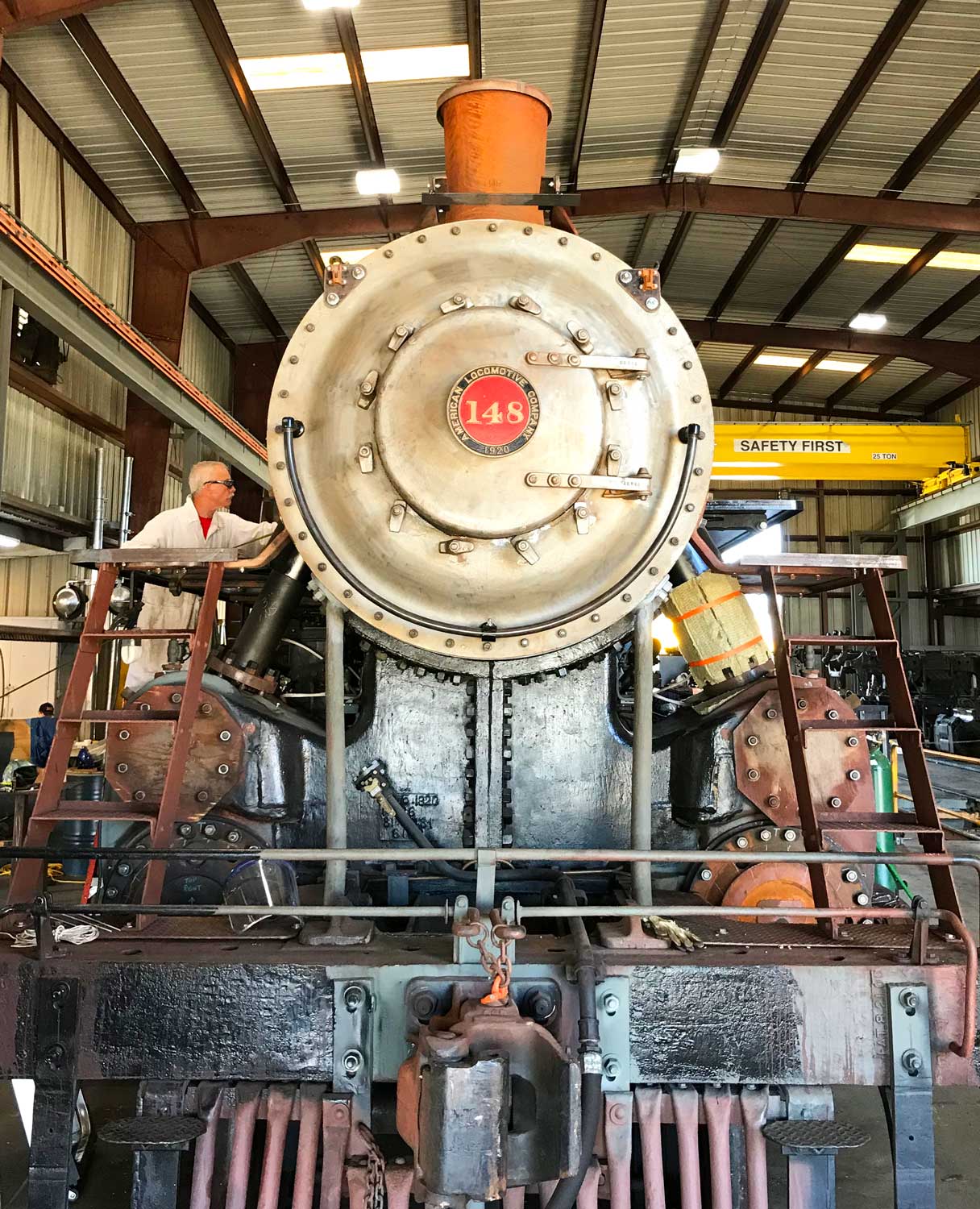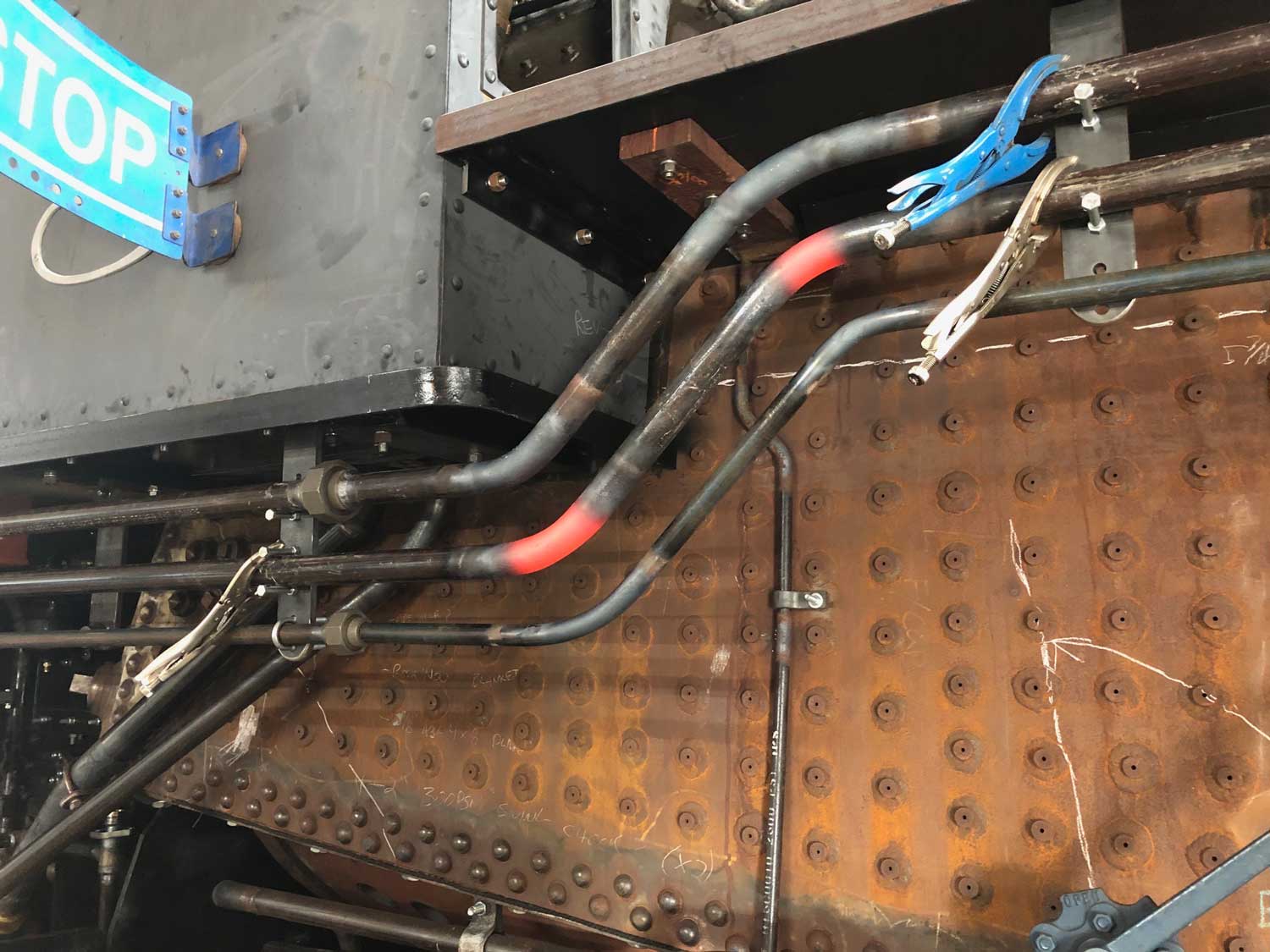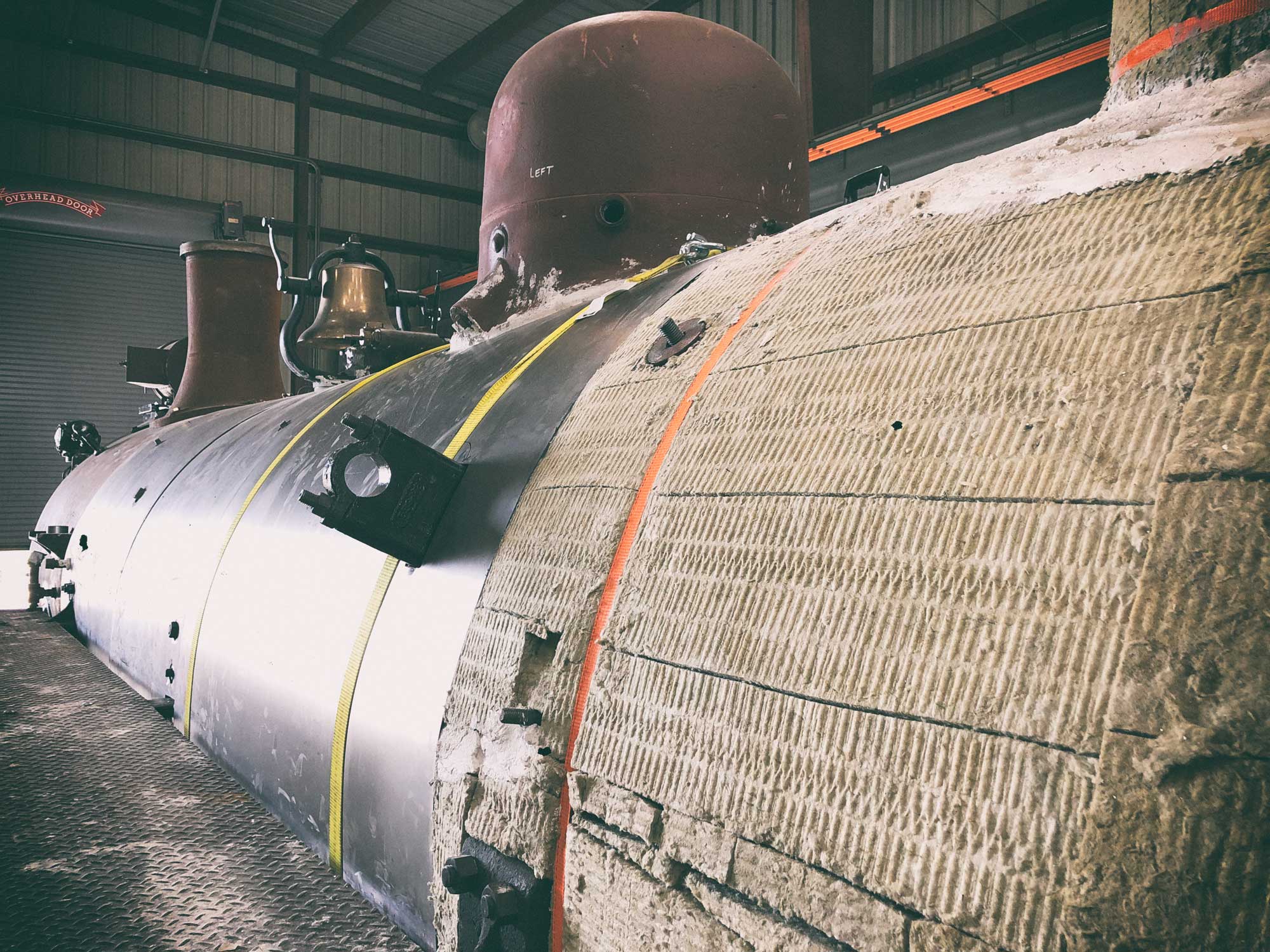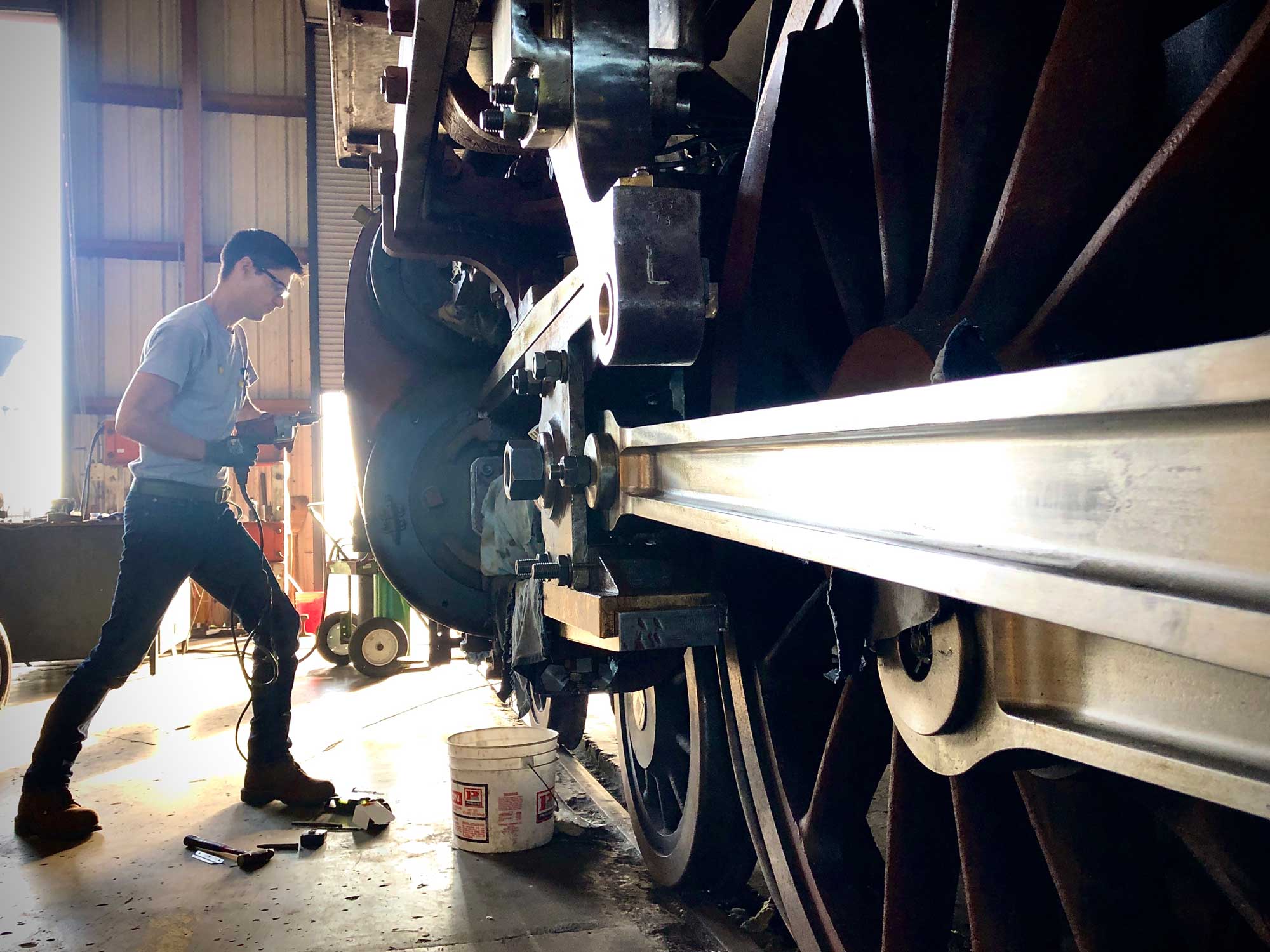DISCLAIMERS
Your support and participation are greatly appreciated.
By purchasing tickets or attending our events, you agree to review and consent to the following terms:
- All schedules, timetables, and event amenities and offerings may be altered by the Sugar Express at any time due to railroad logistics, late departures, mechanical substitutions, or other unforeseen circumstances.
- Your presence and participation indicate that you, as a ticket holder, ticket purchaser, guest, passenger, crew, or vendor accept the limits of liability from inherent risks of all activities and operations. We reserve the right to substitute motive power or rolling stock as necessary.
SAFETY
These operations take place at a working railroad facility. Please be mindful of your safety and the safety of your guests. Watch your step, be mindful of moving railroad equipment, uneven surfaces or bad footing, and pinch points for fingers, arms, and limbs. Do not walk on the railhead and obey instructions from the train crew at all times.
- Please wear sturdy, comfortable shoes – DO NOT wear flip-flops, sandals, or open-toed or high-heel shoes. Boarding and detraining sites may well have uneven footing, large heavy gravel, unusually high steps – sometimes as much as 20 inches, and walking is required at all locations. Passengers with limited mobility need to be aware of these limitations and should expect such situations, and should contact us for advance planning and accommodations.
- Trains to run rain or shine. No smoking onboard the train.
- You must wear safety glasses if riding in an open vestibule during a trip or on a railroad that permits open vestibules.
- We cannot guarantee the security of cameras and other personal property – you must keep track of your own belongings.
- For their safety, we do not allow household pets aboard our trains. Service animals are welcome.
ACCOMMODATIONS
Most of the passenger cars used on these trains were built in the 1940s and 1950s, decades before ADA handicap considerations were implemented on railroad passenger cars. These historic cars mostly have narrow hallways, narrow doorways, and small restrooms and these can present many handicapped persons with insurmountable challenges. Cars used on excursions are historic in nature and may be subject to mechanical issues, which while possible are nevertheless uncommon.
Passengers who desire to sit together must make reservations at the same time and present themselves on the train together as seats are not assigned.
Some first-class cars have more than one type of seating arrangement within the car. Passengers may be asked to switch seats to best accommodate groups or uneven parties. A class of ticket refers to accommodations and services and may not be specific to a car unless specifically stated on the ticket.
Do not book other transportation or make time-sensitive reservations or obligations.
Sugar Express utilizes historic steam locomotive No. 148 for most of its events. Due to the absence of a turntable or suitable turning facilities in numerous destinations, some trips may require the use of a diesel locomotive for reverse moves or on the return portion of some trips.
REFUNDS ON EXCURSION TICKETS
Refunds or cancellations are only applicable 30 days before an event.
Refunds are not applicable in the event of missed or late trains. Passengers are responsible for being at the boarding site at least 30 minutes before departure time. Delayed and “No show” guests are not entitled to a refund. Reserved tickets will be released for resale 10 minutes before departure.
Any refund is subject to a 25% service charge and is only issued if there is a waitlist for that particular class of tickets.
Sugar Express has the right of refusal to any passenger who refuses to obey safety rules or whose behavior has been or may be detrimental to other passengers and/or crew. In the unlikely event of a cancellation, refunds will be issued less any ticketing fees.
CONSENT TO PHOTOGRAPHY AND VIDEO RECORDING
By entering Sugar Express or U.S. Sugar property or participating in Sugar Express events, operations, and excursions and by your presence here, you consent to be photographed, filmed, and/or otherwise recorded. Your entry constitutes your consent to such photography, filming, and/or recording and to any use, in any and all media throughout the universe in perpetuity, of your appearance, voice, and name for any purpose whatsoever in connection with the Sugar Express. You understand that all photography, filming, and/or recording will be done in reliance on this consent given by you by entering this area.
HOLD HARMLESS AGREEMENT
By entering Sugar Express or U.S. Sugar property or participating in our events, operations, and excursions and by your presence here, you and your guests agree to hold these parties harmless in the event of sickness (including COVID-19), physical risk, or damage. You assume all related liability for accidents, negligence, combined negligence, and omissions.











